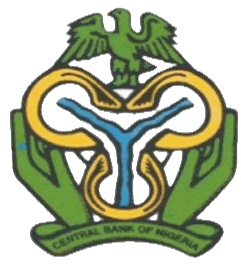Please use this identifier to cite or link to this item:
https://library.cbn.gov.ng:8443/jspui/handle/123456789/479| Title: | Relationship between central banks and international financial institutions. |
| Authors: | Omamogho, C. U. |
| Keywords: | International Financial Institutions (IFIs), Bretton Woods system, Central banks, Nigeria, Special Drawing Rights (SDRs), International Monetary Fund (IMF). |
| Issue Date: | Dec-1995 |
| Publisher: | Central Bank of Nigeria, Research Department. |
| Citation: | Omamogho, C. U. (1995). Relationship between central banks and international financial institutions. Economic and Financial Review, 33(4), 429-437. |
| Series/Report no.: | Vol. 33;No. 4 |
| Abstract: | Financial institutions are intermediaries that mobilise and channel funds from surplus savers and make them available to borrowers. In the same way, the International Financial Institutions (IFIs) may be defined as those multinational financial organisations which provide financial intermediation between surplus institutions/countries and deficit institutions/countries. For ease of discussion, the author's typology of IFIs will cover only global financial institutions, with particular reference to the Bretton Wood System. This is underpinned by the fact that the Bretton Woods institutions have become the dominant actors and at the epicenter of the international financial system since the end of the Second World War. These Institutions include the International Monetary Fund (IMF), International Bank for Reconstruction and Development (IBRD or World Bank) as well as the affiliates of the World Bank - the International Development Association, the International Finance Corporation and the Multilateral Investment Guarantee Agency. It should be mentioned from the outset that membership in these institutions is open only to independent sovereign states. In this regard, the Central Bank of Nigeria has no self membership in the Bretton Woods institutions but participate in collaboration with the Federal Ministry of Finance as the agents of the Federal Government of Nigeria. In this way the Central Bank of Nigeria acts in concert with other central banks and multilateral financial institutions in finding solution to global economic and financial problems to enable Nigeria better achieve her national economic goals. In what follows, the paper shall examine the relationship between Central Banks and the International Financial Institutions, with emphasis on the Nigerian experience. To this end, the discussion is organised into four parts. Part I will sketch the historical antecedents of the Bretton Woods system while Part II focuses on the salient features of the Bretton Woods institutions. In Part Ill, the relationship of the Central Bank of Nigeria with the multilateral financial institutions is discussed while Part IV contains the summary and concluding remarks. |
| URI: | http://library.cbn.gov.ng:8092/jspui/handle/123456789/479 |
| ISSN: | 1957 - 2968 |
| Appears in Collections: | Economic and Financial Review |
Items in DSpace are protected by copyright, with all rights reserved, unless otherwise indicated.
Admin Tools
